Have you ever wondered what web developers, web designers and webmasters do?
There are different professions that revolve around the creation and management of websites and often there is a tendency to get confused about what the roles of each of these figures are.
For this reason, today we will clarify what are the differences between web developer, designer and webmaster. We will see what each professional does and what activities they do in the creation of a website.
Table of Contents
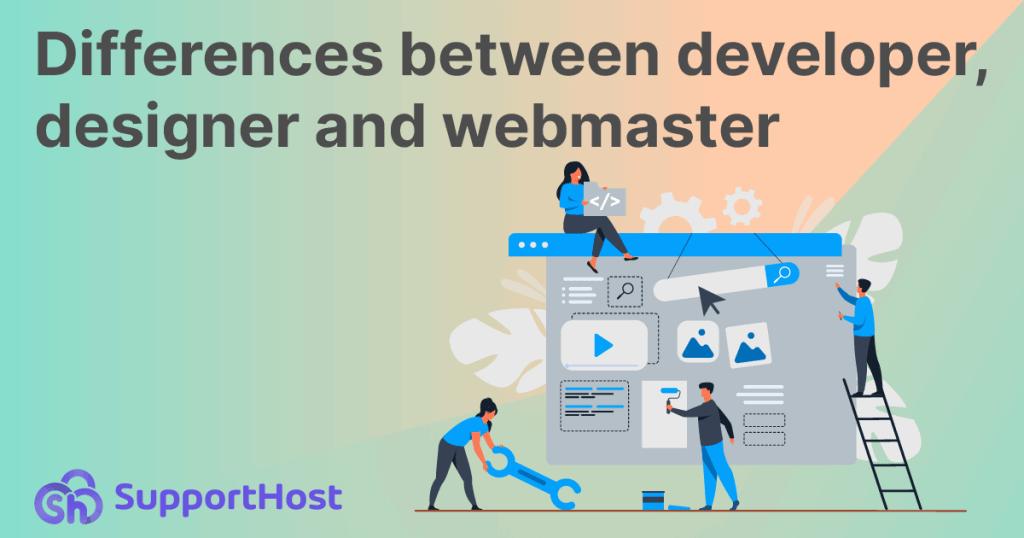
What a webmaster does
With webmaster we refer to who is in charge of maintaining the websites, this figure is in charge of management and updates.
In reality, however, this term was originally used to identify a person who took care of all the aspects inherent to the creation of the site. A single figure who dealt with design and development, thus merging the skills of the web designer and the web developer together.
To date, the situation has changed, and the development of websites is more complex to the point of requiring an entire team for the realization.
The design work is assigned to the web designer, and even in this role, as we shall see, there are additional specializations that focus on certain aspects in particular such as user experience. In charge of development will be web developers who in some cases will be separate figures specializing in front-end and back-end development.
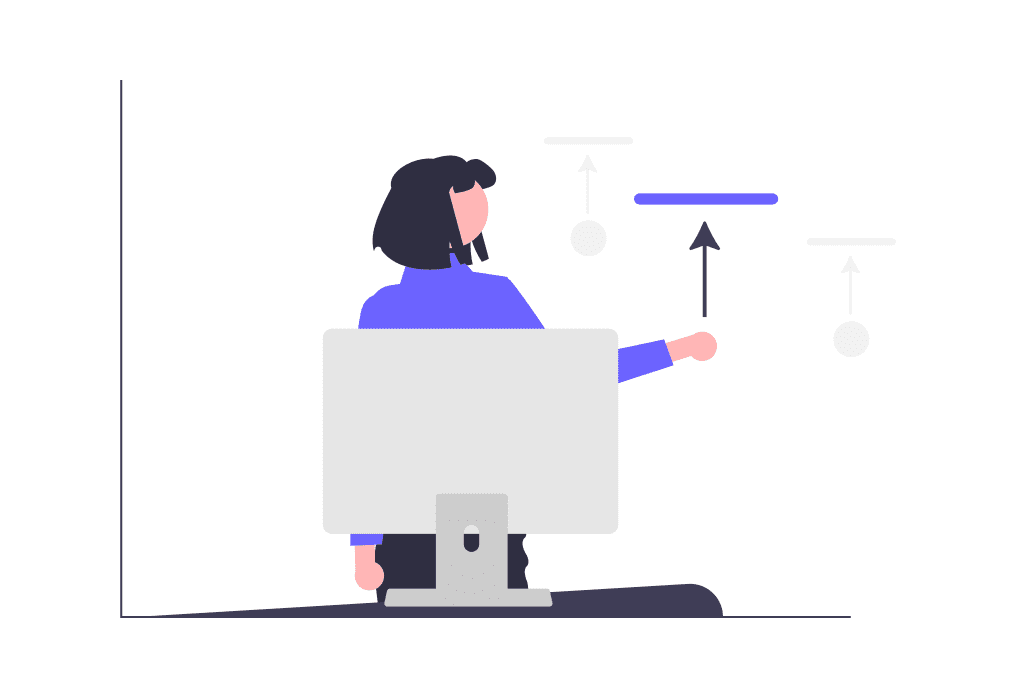
The figure of the webmaster nowadays can therefore be considered as the person who takes care of the ordinary maintenance of the site, rather than the actual realization.
With the increase in the spread of CMS for the creation of websites, today it is also increasingly common to hear about managed WordPress, in relation to those services specialized in the management of a WordPress site.
Do webmasters still exist?
Here is a fun fact that helps us understand how the word webmaster is less and less used.
Google also used the term “webmaster” for its section of guides aimed at website owners. What used to be called Google Webmaster Central has since become Google Search Central.

This is what the help section of Google Webmaster Tool looked like, which has now become Search Console (source: waybackmachine).
The name change was accompanied by a note, released in November 2020. Here we are talking about the term “webmaster”, which we remember being used for the first time in 1993, underlining how today it is becoming less and less used by professionals in the sector.
A user experience study we conducted revealed that very few web professionals still identify as webmasters. They are more likely to use terms such as search engine optimization (SEO) experts, online marketers, bloggers, web developers, or site owners, but few still use the term “webmaster”.
What a web designer does
The web designer is the figure who is responsible for defining the structure of the site and the arrangement of the elements within the web pages.
The web design sector therefore includes all those activities concerning the visual aspect of the website.
This includes designing the site’s interface and the elements that allow navigation between pages. However, without neglecting the positioning of the elements themselves to improve the user experience.
As we will see, in fact, this figure can be divided into further specialized roles only in some of the aforementioned activities.
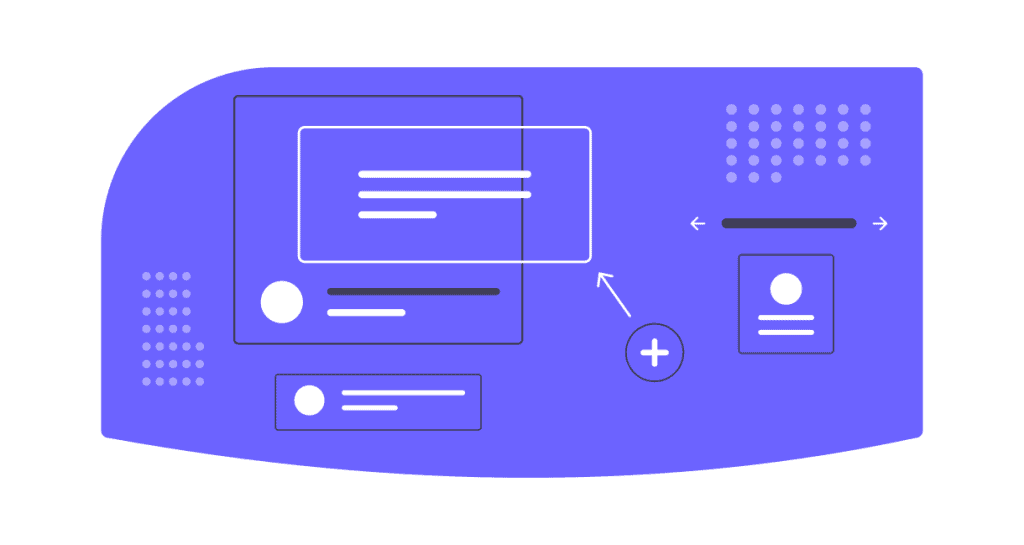
In practice, some activities that are carried out by the web designer in the creation of the site are:
- the choice of the combination of colors and palettes to be used;
- the definition of typography: from the fonts to be used to the hierarchy, in order to maintain a consistent style throughout the site;
- the choice of the graphic style to be adopted so that it is uniform in terms of icons, logos, illustrations, photographs, backgrounds, etc;
- the actual layout that includes: the arrangement of the elements, the spacing and generally provides for the creation of different templates based on the types of pages.
Generally the work of the web designer precedes the actual development phase. First, the structure and appearance of the pages are defined. In this phase, therefore, those who deal with the design fully outline the structure, creating a prototype or a mockup.
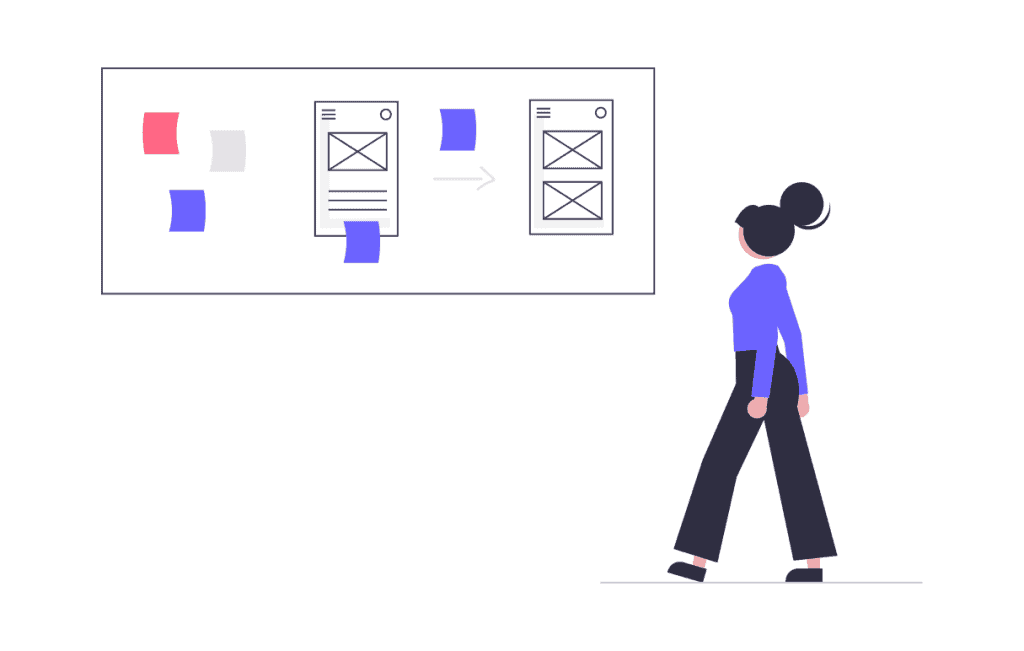
Subsequently it will be up to the developers to use this structure as a basis to devote themselves to the actual development: the phase that will allow the pages to “work”.
Let’s take a practical example with the creation of a button to return to the home page. First the designer can define the shape, size and color of the button. Then the web developer will make sure that the button works as a link to the home page.
Obviously, web designers and web developers are figures who cooperate during the creation of the website. In some cases the competences of these two roles will therefore be partially overlapping.
For example, it is absolutely not true that web designers should not have “code” knowledge. This is especially true for the mastery of CSS and HTML, two skills that in most cases cannot be missing in the web designer’s knowledge base.
In the final summary we will see a direct comparison web designer vs web developer that will allow us to better understand the distinction between the two tasks and understand what exactly they do when creating a website.
Web designer: who says they are all the same?
It is a bit of an understatement to think that only one web designer can be specialized in everything. It would be a bit like expecting that one person alone can build a website independently, in a professional way, as both a developer and designer.
In reality, the role of the web designer can be divided into other specializations:
- UX designer: specialized in designing the user experience;
- UI designer: who takes care of the user interface.
Let’s see what the difference is between the two roles.
What does a UX designer do?
Also, in this case the skills of UI and UX designer are partly overlapping. However, we could define the specialist in UX designer, the figure who takes care of ensuring a high level of usability.
To succeed, he will have to analyze the needs of the user upstream and also make subsequent tests to make sure that the final result is the desired one.

The UX designer is also the one who has the goal of making web pages accessible.
Accessibility is linked to the very concept of usability, however, extended to everyone. The goal is to design the sites taking into account disabilities and therefore with a view to making the site usable also to those who use screen readers or other support technologies.
What does UI designer do?
The development of the user interface (UI) must be carried out in such a way as to make the visitor interaction on the site as simple as possible.
The UI designer will then take care of defining the appearance of the web pages so that visitors can easily find what they are looking for. This also means being able to highlight the important elements based on the needs and expectations of the end user.

It goes without saying that even this figure cannot underestimate the importance of the usability of the pages.
In practice, defining the UI design serves to establish the visual appearance of the site. But at the base of all the realization there must be the UX design. In other words, at all stages of development, the user experience must be thought of.
What a developer does
The developer, also often referred to as a web developer, takes care of the actual development.
Development is a bit like the implementation with which the transition from the project to the functioning website is carried out. In fact, it is the developer who takes care of the code that makes the functions of the website possible.
The job of the web developer are, therefore, all those actions aimed at creating the website with the exception of the aspects of design which the web designer deals with.
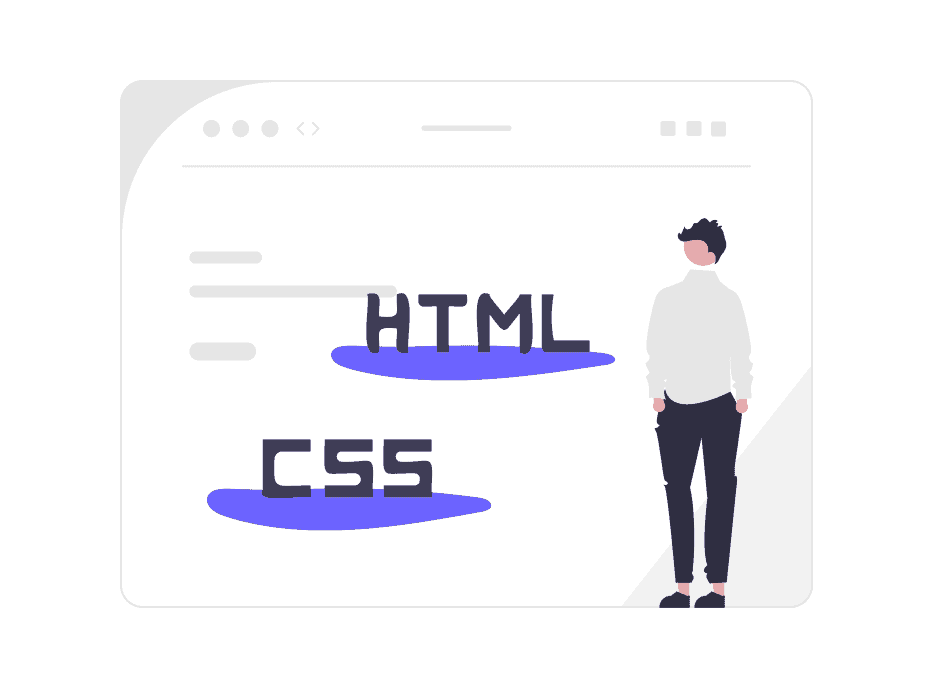
The web developer must have knowledge of CSS, HTML, JavaScript, but also server-side and application languages such as PHP, Perl, Python, Node.js.
He will have to know how to interface with libraries such as React.js or jQuery, and to know how to create and manage databases, the latter is also a key competence of the system administrator ‘s role.
Web developer specializations
There is not only “the developer”, but also this figure has different specializations. In fact, we speak of:
- front-end developers;
- back-end developers;
- full-stack developers.
The front-end developer is the figure who starts from the structure or prototype designed by the web designer to ensure that the visible elements work.
In practice, it deals with the programming of the “front-end”, i.e., all the elements of the site that will be visible to visitors.
The back-end developer, on the other hand, is responsible for programming all the functions that are”not visible” directly on the site, but which allow them to function. For example, the back-end developer will interface with the web server, database and development API.
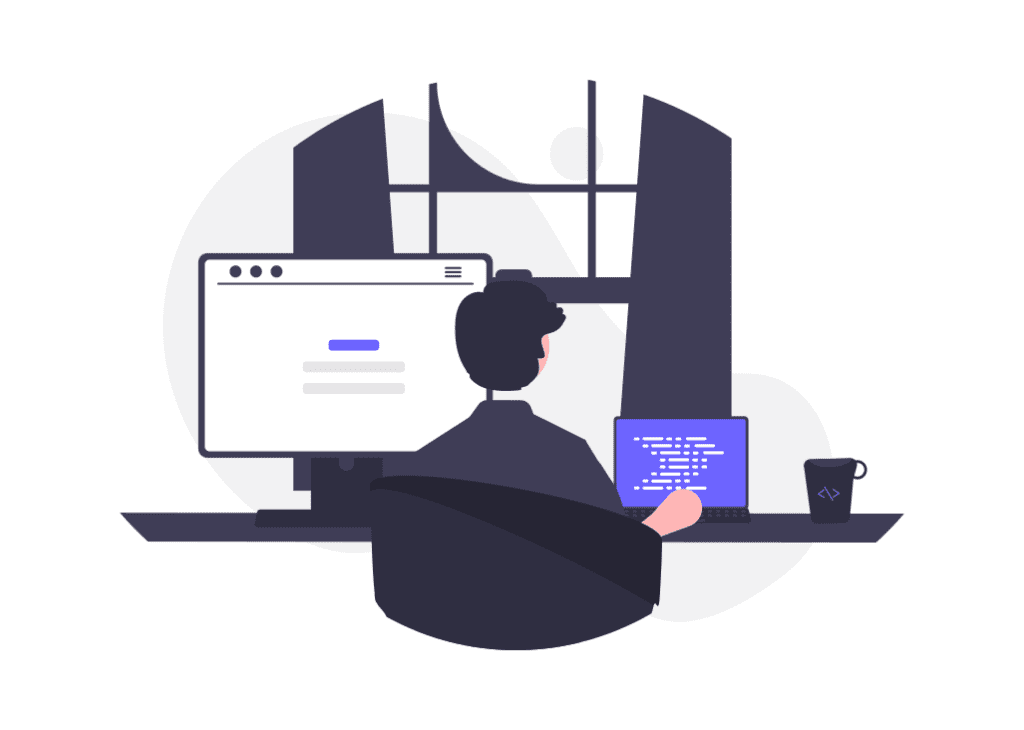
When the web developer deals with both front-end and back-end development, we are talking about a full-stack developer.
Web developer vs designer: comparison between the two roles
Now that we have seen what the role of these two figures is, let’s look at a summary that allows us to better understand the differences between web developer and web designer are.
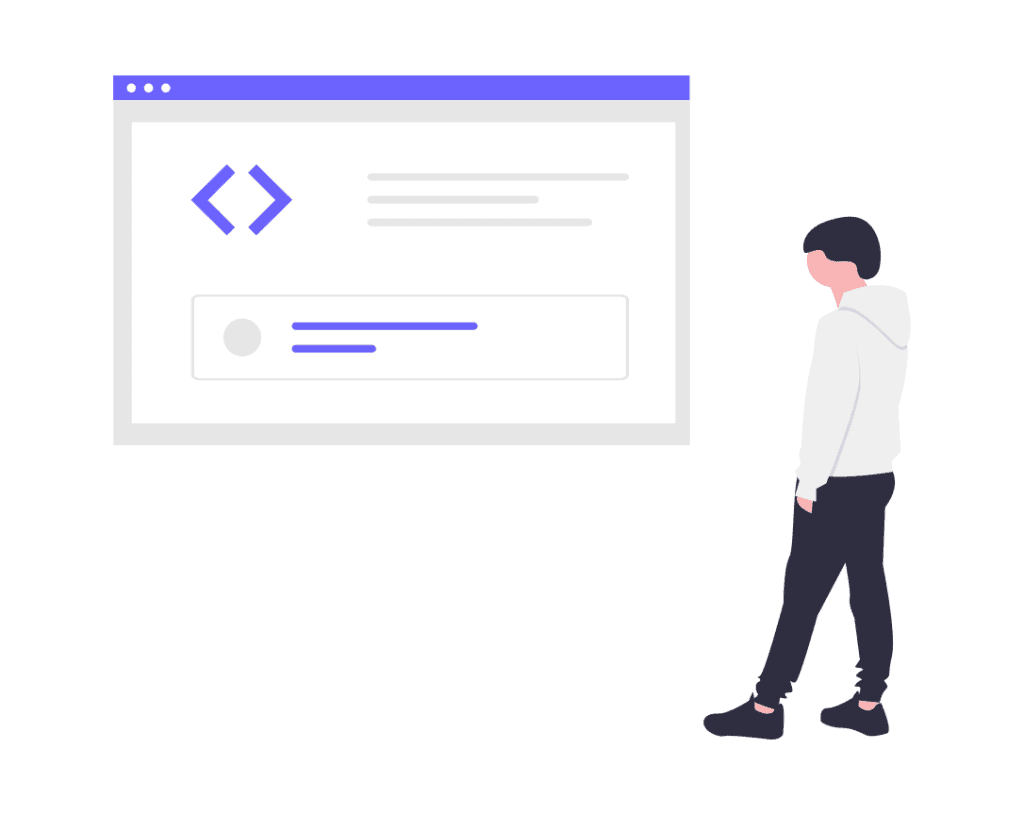
Looking at this comparison between web designer and developer, it will clear up what the each one does when it comes to the creation of a website.
| Web designer |
|---|
| Web designers focus on the visual and graphic aspects of the site, with an eye to usability. |
| They have more room for creativity and are less concerned with technical issues. |
| Their job is to design the site starting from a basic idea. |
| In addition to curating the graphic style, web designers focus on the user interface (UI) and user experience (UX). |
| In their arsenal of tools of the trade raster and vector graphics programs cannot be missing. |
| Web developer |
|---|
| The developers take care of the development and programming of the site to ensure it works. |
| Development requires technical knowledge: from programming languages to the use of frameworks. |
| Using the design created by web designers as a basis, they create a functioning and usable site. |
| The developers are responsible for the technical implementation and actually write the code that allows the site to function. |
| CSS, HTML, PHP, JavaScript and other programming languages are their daily bread. |
The role of web agencies
As you can also see from this comparison, developers and web designers work closely to create new web projects whether it is to create an ecommerce site, a blog or a company site.
More often than not, professionals create web agencies that also have graphic designers within them to provide customers with other services such as logo creation.
When a client entrusts an agency to do a project, they can also request a complete service. Often, in fact, agencies rely on hosting services for web agencies in order to follow customers even when it comes to choosing the most suitable hosting plan for the site.
Conclusion
We have looked at how web developers, web designers and webmasters are different from each other. The process of creating the site involves several aspects: from taking care of the graphics to writing the code that allows the site to operate for all intents and purposes.
For the success of the project, each phase of the site is entrusted to a specialized figure. For this reason, when you create a professional website, you rely on a team made up of several people, each one trained to do their job.
What do you think? Do you agree that the term webmaster is used less and less and that its connotation has changed over the years? Let us know with a comment.



Leave a Reply